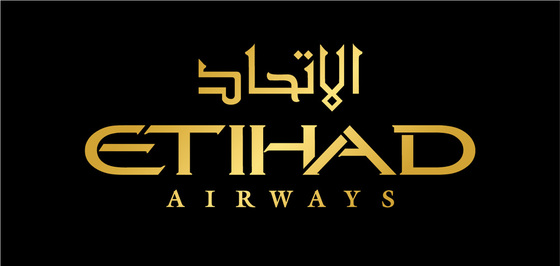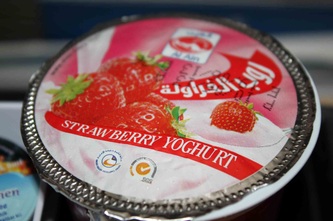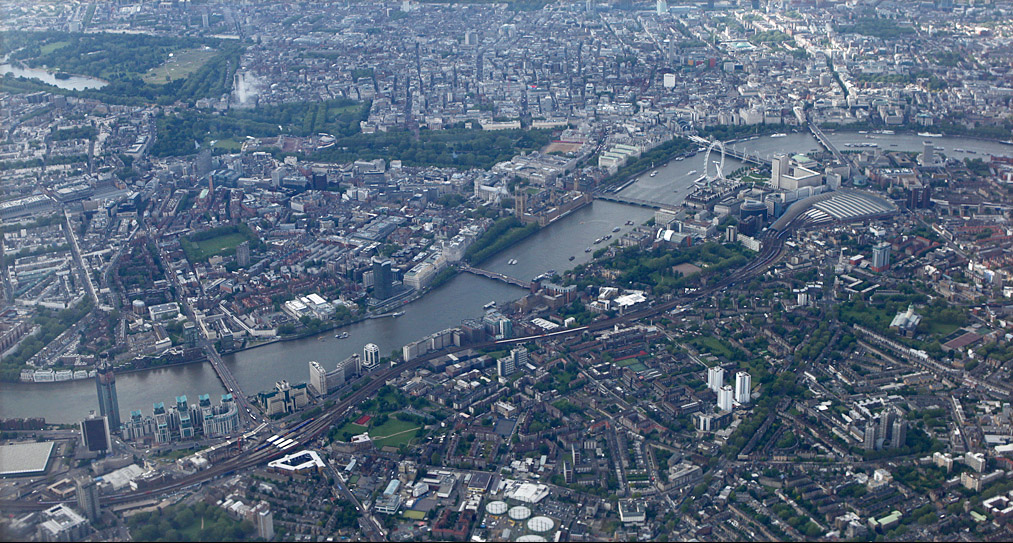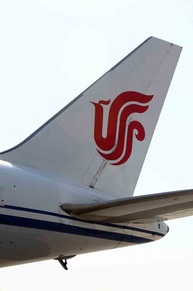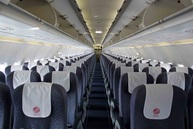|
Etihad Airways (الإتّحاد) is the award-winning national flag carrier of the United Arab Emirates (U.A.E.) in the Middle East. Founded as early as July 2003 the airline commenced commercial operations in November 2003, and has gone through a rapid expansion in a short time span to serve 87 destinations using 79 state-of-the-art modern, and young aircraft. Together with code-shares with other world airlines, Etihad Airways passengers can fly to over 349 destinations. The airline, which employees a total of around 9,000 people world-wide from over 120 nationalities, is based in the ultra-modern Abu Dhabi International Airport and serves its destinations across Europe, Middle East, Africa, Australasia, the Indian subcontinent, and East Asia. Since it’s founding, Etihad Airways has received a range of awards that reflect its position as the top premium airline brand in the world, including ‘World’s Leading Airline’ at the World Travel Awards in 2009, 2010 and 2011. The core ethos of Etihad Airways is to seek to reflect the best of Arabian hospitality – cultured, considerate, warm and generous – as well as support the development of Abu Dhabi as a business and leisure destination and global hub. Etihad Airways operates one of the youngest and most environmentally efficient aircraft fleets in the world. Since starting its operations, the airlines's fleet has grown to 79 aircraft, including six cargo-only freighters. At the time of writing Etihad Airways has a firm order for 88 aircraft to be delivered within the next 5-7 years (with options for another 85). These include 10 Airbus A380-800 (Super Jumbos), 41 Boeing 787-9 (Dreamliner), and 12 orders for the Airbus A350-1000 aircraft (Extra Wide Bodied). In 2011, the airline reported a full year EBIT of US$137 million, on the back of annual revenue growth of 36.0 per cent to US$4.1 billion, with net profits of US$14 million bringing Etihad Airways into the black for the first time. In 2011, Etihad Airways carried 8.3 million passengers, a 17 per cent increase from 2010, and is on target to once again beat that record in 2012. The airline plans to carry more than 25 million passengers to more than 100 destinations aboard a fleet of 150 planes by 2020 Etihad Airways has over 40 code share agreements in place with airlines across the world. These code share partnerships, along with equity acquisitions and organic growth, form the three pillars of Etihad Airways expansion plans. The senior management team has identified equity investment as a means to strengthen its relationships and allows it to work with partners to identify revenue generation and cost management opportunities. At the time of writing, Etihad Airways holds equity investments in Air Berlin (29.21%), JAT Airways (Serbia Airways- 49%), Jet Airways (24%), Air Seychelles (40%), Virgin Australia (10%), and Aer Lingus (2.987%). International sports sponsorship also plays a central role in Etihad’s global marketing strategy, as it seeks to develop its profile in markets across the world. The airline has signed several major sponsorships in mainstream sporting events, as well as a number of tactical deals with country or region-specific sports. Some of Etihad Airways’ major partnerships include: The Formula One Etihad Airways Abu Dhabi Grand Prix; Manchester City Football Club; Etihad Stadium in Melbourne; and the Harlequins Rugby Football Club. In the U.K., Etihad Airways flies non-stop between Abu Dhabi and London Heathrow (27 flights a week), and Manchester (14 flights a week), connecting passengers to over 340 destinations worldwide through its hub at Abu Dhabi. I was on the flight from Abu Dhabi to London Heathrow Airport on Etihad Airways’ Boeing 777-300ER to check out their Economy Class seat, cabin, and service. So enjoy the 5-star experience of this beautiful aircraft, and airline: Route: ABU DHABI (AUH) to LONDON HEATHROW AIRPORT (LHR) Departure date and time of flight: June 2013 Flight number: EY19 Flight duration: 7 Hours and 35 minutes Class: ECONOMY CLASS Aircraft type: BOEING 777-3FXER (16 aircraft in service) Aircraft registration: A6-ETK Engine Type: 2 x GE GE90-115B Aircraft Serial Number: 39686 First flight: 30/05/2012 Delivery flight: 28th June 2012 Seat configuration for this aircraft: Diamond First Class: 8 suites in a 1-1-1-1 configuration Pearl Business Class: 40 seats in a 1-2-1 configuration, Coral Economy Class: 282 seats in a 3-4-3 configuration Comments on the check- in process, and any issues: This was a connecting flight between Shanghai and London Heathrow, so therefore was no need to check-in. However, passengers on connecting flights are required to go through security and passport control before they go through Duty-Free again to their connecting flight. If you happen to arrive at a peak time (early morning especially) then the waiting queues can be quite long. Any baggage issues: This was a connecting flight between Shanghai and London Heathrow, so therefore was no need to check-in, and had no worries about the baggage. Etihad Airways is one of the very few airlines that has a generous luggage allowance for all passengers in all cabins. Economy Class passengers can carry one complimentary bag in the hold with a total not exceeding 30kg. Even if you choose to exceed your luggage allowance (at additional cost) each item must not exceed 32kg. Items must not exceed the dimensions 45cm x 72cm x 90cm. Punctuality of the flight: The flight departed on time from Abu Dhabi’s runway 31L heading straight towards the Persian Gulf. The flight path took us over Kuwait, Iraq, Turkey, Bulgaria, and onto Mainland Europe. Cruising level was around 36,000 feet, and rising to around 38,000 over Turkish airspace. Comments regarding the pre-flight service: Passengers were offered pre-take off drinks, including mineral water from Al Ain brand, and some boiled sweets (treat!). All passengers were provided with an amenity kit comprising of socks, eye-shades, toothbrush, and a ‘wake me up/don’t wake me up’ stickers. Comments regarding the pre-meal service: Plenty of water and orange juice was provided on this morning/daytime flight. The orange juice had a pleasingly fresh-squeezed flavour. Comments regarding the first meal: Etihad Airways are one of the few airlines to serve two meals during a six-hour flight. The first meal, breakfast, was offered around an hour after take-off from Abu Dhabi. The cabin crew started handing out hot (or cold) towels prior to the breakfast a la carte. There were three options for the breakfast hot dish: 1. Shashouka with feta cheese lamb meat balls and foul medames 2. Plain omelette beef sausage, baked beans, and roasted potatoes 3. Coconut custard filled crepe mixed orange compote [vegetarian option] I opted for the ‘plain omelette’- the closest thing to an English breakfast (albeit in the sky). All Economy Class meals on economy class are served with plastic cutlery. While safety may be one of the reason, the real reason is (of course) cost cutting. Stainless steel cutlery adds extra weight, and costs more. Airlines are saving as much money as they can in hard economic times (even though Etihad Airways is an airline of a country that is not short of money). It has to be said that airlines break even by filling in their First and Business Class seats. Economy Class is all extra profit. So as long as the first and Business Class cabins are filled (on full IATA fare as possible), then all the seats filled in Economy Class are just extra money for the airlines. Served alongside with the main dish was exotic fruit (melon and dragon fruit) with honey yoghurt. Every Economy Class meal tray contained a pot of fresh orange juice, and a pot of fruit yoghurt to wake up the senses after a long flight. Various types of warm bread rolls, pain du chocolate, cheese, and preserve were served. A final round of drinks was completed. This included a selection of beverages, soft drinks, juices, eight types of teas by Dilmah (Ceylon, Green tea, Lemon and Lime, and Decaffeinated), and coffees (cappuccino, filter coffee), and hot chocolate. All meals on Etihad Airways are prepared according to all Halal requirements. Comments regarding the after meal drinks and in-flight snacks: A second round of alcoholic and non-alcoholic drinks (including any coffee, tea and beverages) were offered. I opted to drink plenty of still mineral water. Tempting drinks such as Dewar’s Whiskey, Bacardi Rum, Beefeater Gin, and Absolute Vodka, Stella Artois, Foster’s and Heineken were offered. Non-concentrated 100% juice drinks of orange, apple, mango and tomato were offered too. Plenty of fresh water (provided by Al Ain) was distributed throughout the flight. Passengers could go to the galley and get a free flow of pot noodles, drinks (alcohol and non-alcohol) if they wanted. Coffee and tea are offered in lovely Etihad Airways branded brown paper cups (that can be recycled), and milk is offered by local Abu Dhabi vendor. Evervess (soda, tonic water, and ginger ale), and Al Ain exclusively offered bottled water. Comments regarding the second meal: Inspired by culinary treats from around the world, Etihad Airways’ in-flight dining experience offers mouth-watering dishes created by award-winning chefs. A light snack (known as ‘Café Service’ on Etihad Airways), was served around an hour before landing at Heathrow. There were two options from the wholesome filled rolls: 1. Melted cheese and onion pasty 2. Tuna and cheese toasted sandwich I opted for the melted cheese and onion pasty. It was nice to see a creative dish such as this being provided as an airline meal. While it was not really enough for a 7-hour flight (again I suspect that cost cutting is in place here!), it was nevertheless delicious. Drinks were served shortly after. Comments regarding the after meal drinks and in-flight snacks: A second round of alcoholic and non-alcoholic drinks (including any coffee, tea and beverages) were offered. I opted to drink plenty of still mineral water. Tempting drinks such as Dewar’s Whiskey, Bacardi Rum, Beefeater Gin, and Absolute Vodka, Stella Artois, Foster’s and Heineken were offered. Non-concentrated 100% juice drinks of orange, apple, mango and tomato were offered too. Plenty of fresh water (provided by Al Ain) was distributed throughout the flight. Passengers could go to the galley and get a free flow of pot noodles, drinks (alcohol and non-alcohol) if they wanted. Coffee and tea are offered in lovely Etihad Airways branded brown paper cups (that can be recycled), and milk is offered by local Abu Dhabi vendor. Evervess (soda, tonic water, and ginger ale), and Al Ain exclusively offered bottled water. Comments on the in-flight entertainment system: Huge headphones were offered in the Economy Class cabin. The 10.4 inch touch screen PTV screen is placed behind every Economy Class seat (15.4 inch in Pearl Business Class, and a whopping 23-inch screen in Diamond First Class). Etihad Airways has 3 different IFE systems: Widescreen AVOD, PTV AVOD and Main screen. Passengers can choose from over 650 hours of on-demand entertainment on our E-BOX In-flight system. Every seat in the Coral economy class is equipped with power sockets to charge laptops or phones, and sockets for USBs, Ethernet and audio jacks, allowing passengers to plug and play their own devices or music through the E-BOX system. Comments of professionalism of the cabin crew: The cabin crew were very hospitable, and proud to work for Etihad Airways, and seemed to be very proud to wear their uniform too. There was a genuine smile on every crew members face and you could tell that they really enjoyed their job. There was a real sense of teamwork in the cabin. That sense of being proud of their airline, and of their job was portrayed the minute the crew members walked through the departure gate. Etihad Airways has cabin crew from over 120 nationalities who offer a consistent 5-star service to its passengers. Some airline companies have all kinds of motivated mottos that they will look after their customers, but sometimes they fail in this miserably. Etihad Airways provides a very personalised service, and makes sure that everyone enjoys a smooth, and comfortable flight. On our flight, we had cabin crew from Iran, Pakistan, Ukraine, South Africa, South Korea, and Italy. The languages spoken were English, French, Afrikaans, Pashto, Dari, Urdu, Italian, Arabic, Hindi, Russian, Korean, and Chinese (Mandarin and Cantonese). Comments on the interior of the aircraft (including seat comfort): The Boeing 777-300ER of Etihad Airways has 282 Coral Economy Class seats in a 3-4-3 configuration. Each seat has a pitch of upto 33 inches, and a seat width of 17.5 inches. The cabin is fitted with cradle-style seats that slide forward as well as recline and mood lighting that is adjusted to suit the time of day. Economy Class passengers can enjoy a variety of entertainment programs on a 10.4-inch LCD screen available at every seat. In addition, all seats also have USB ports, PC power sockets and RJ45 sockets. They also provide a family pack to keep the kids occupied and happy through the flight. Etihad’s Economy Class mood lighting system creates the perfect cabin ambiance for the various stages of the passengers’ flight and according to the time of the day, providing a calming effect. Individual lighting options in every seat allow passengers to create their own ambiance The seats, and the flight experience is made comfortable by the mood lighting, the extra amenities (soft black and white striped cushions, and complimentary blankets), eye-shades, socks, and a toothbrush to keep you clean and fresh. The ambiance of the aircraft, and the cleanliness of the cabin makes it a more bearable flight experience compared to flying with other airline companies. The only downside I would say is that if you are a tall or slightly wider framed person then you may find it uncomfortable to fly in economy class. However, it is not up to me to comment further on this, however I can only advise on what my experience is. As a medium sized chap with a waist sized 33 inch, I found the seats as comfortable as any other Economy Class seat you can get with other airline company. Etihad Airways logo and livery: When Etihad Airways commenced operations in November 2003, the airline had the falcon on the tailfin which represented the old Coat of Arms of the United Arab Emirates, which was officially adopted in 1973 until April 2008. The new Coat of Arms was applied to the fleet of all Etihad airways aircraft from April 2008 onwards. The first aircraft to have the new Coat of Arms was an Airbus A320, registered A6-EIF. The new coat of arms has the same falcon but the centre of the circle has the flag of United Arab Emirates. The circle is surrounded with 7 stars that represent the 7 emirates states that make up the United Arab Emirates. The word ‘Etihad’ has been added in large scripture in both English and Arabic (changed from ‘from Abu Dhabi to The World’) in the middle and front of the fuselage of the aircraft, while the rare of the fuselage still has their website address listed. Gold and red cheatlines run along the length of the aircraft’s nose right the way below the windows, and to the back of the fuselage. Etihad Airways has been a proud sponsor for a number of sporting clubs, and so have changed their livery quite a number of times. In times when airlines are saving costs by making aircraft as light as possible, it comes across that Etihad Airways certainly have lots of income to splash out on their aircraft. Painting an aircraft adds extra weight to a plane, and adds to the Maximum Take-Off Weight (MTOW). Some airline companies decide to paint rather than polish their aircraft in order to save costs. The decision to paint or polish the metal surfaces of airplanes is based on marketing, economic, and environmental considerations. Although the net operating cost of polished airplanes is slightly more than that of painted airplanes, no compelling reason generally exists to choose one type of livery over the other. For more about the differences between painting and polishing an aircraft, check THIS article by Boeing. In July 2011, when the airline took sponsorship of Manchester City Football Club, they unveiled a specially liveried Airbus A330-200 aircraft. The new “Blue Moon Rising” livery also marked the commencement of double daily flights between Manchester and Abu Dhabi, effective from August 1, 2011. A team of 40 painters worked around the clock for 18 days in Abu Dhabi to paint the A330-200 in the colours of Manchester City. 450 litres of paint were required to complete the job. The aircraft, which has operated on the Abu Dhabi-Manchester route, also serves Milan, Frankfurt, Brussels, Johannesburg, Cape Town, Kuala Lumpur, Jakarta, Singapore, Istanbul and destinations throughout the Middle East and India. James Hogan, Etihad Airways Chief Executive Officer, said at the time: “We are very proud of our sponsorship of Manchester City Football Club, and of our commitment to the wider community. Manchester has been a key destination for Etihad for five years, and the increase in frequency to double daily indicates our dedication to the region. Comments are closed.
|
About Airline PRThis is a special section on Airline Branding, and Airline Public Relations written by me on all the flights I have been fortunate enough to have been on. These are not records taken from somewhere else, but are actual flights I have been on. Most of the flight trips are officially sponsored by the airline companies in order to promote their certain routes, and aircraft. Airline promotion and PR related work in the aviation industry is one of my expertise. Watch exclusive videos below taken in the cockpit of a Boeing 777-300ER in-flight over Chinese Airspace.
Special thanks goes to Turkish Airlines B777-300ER Cockpit Video 1B777-300ER Cockpit Video 2Archives
February 2024
Airlines Reviewed
All
Proud media partner of QATAR AIRWAYS |

